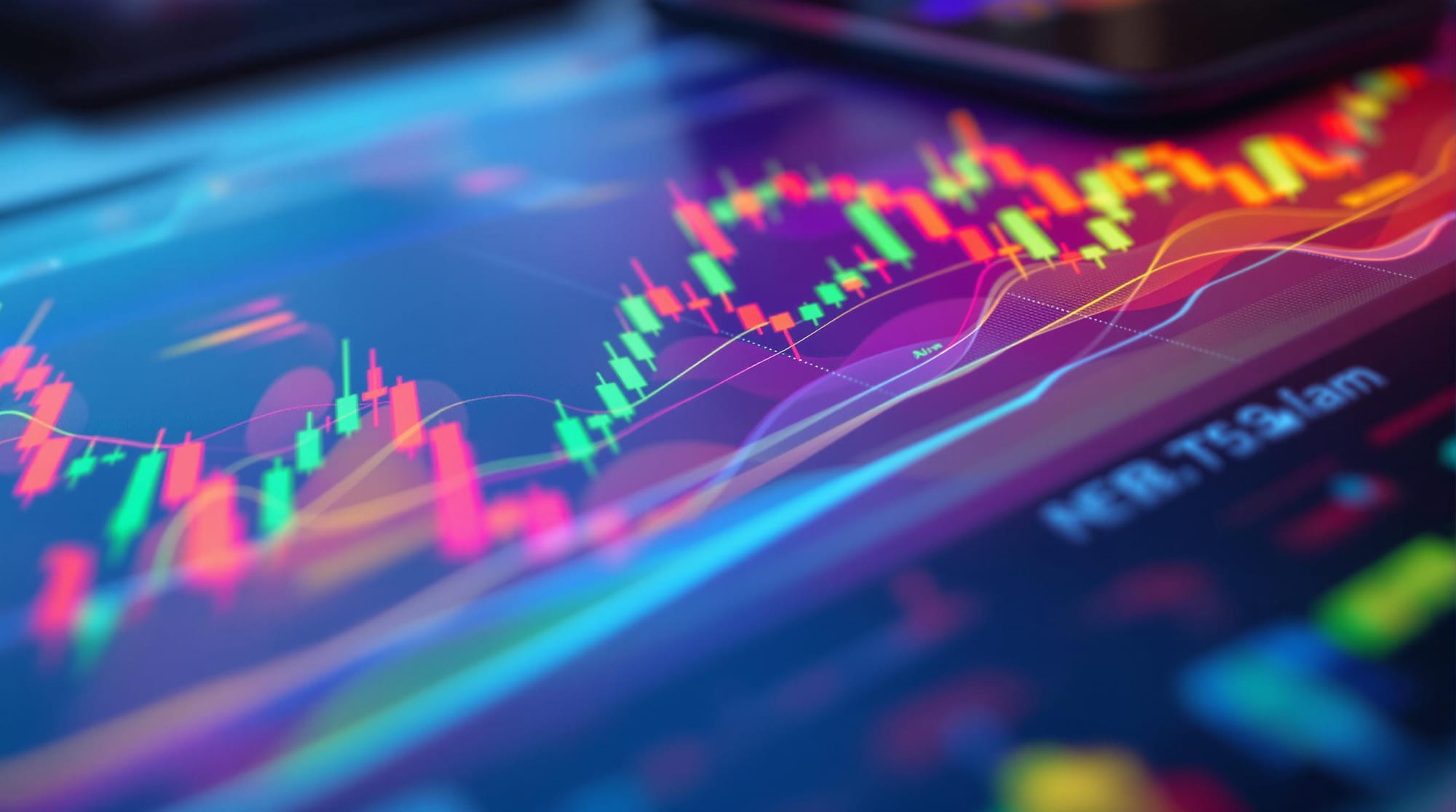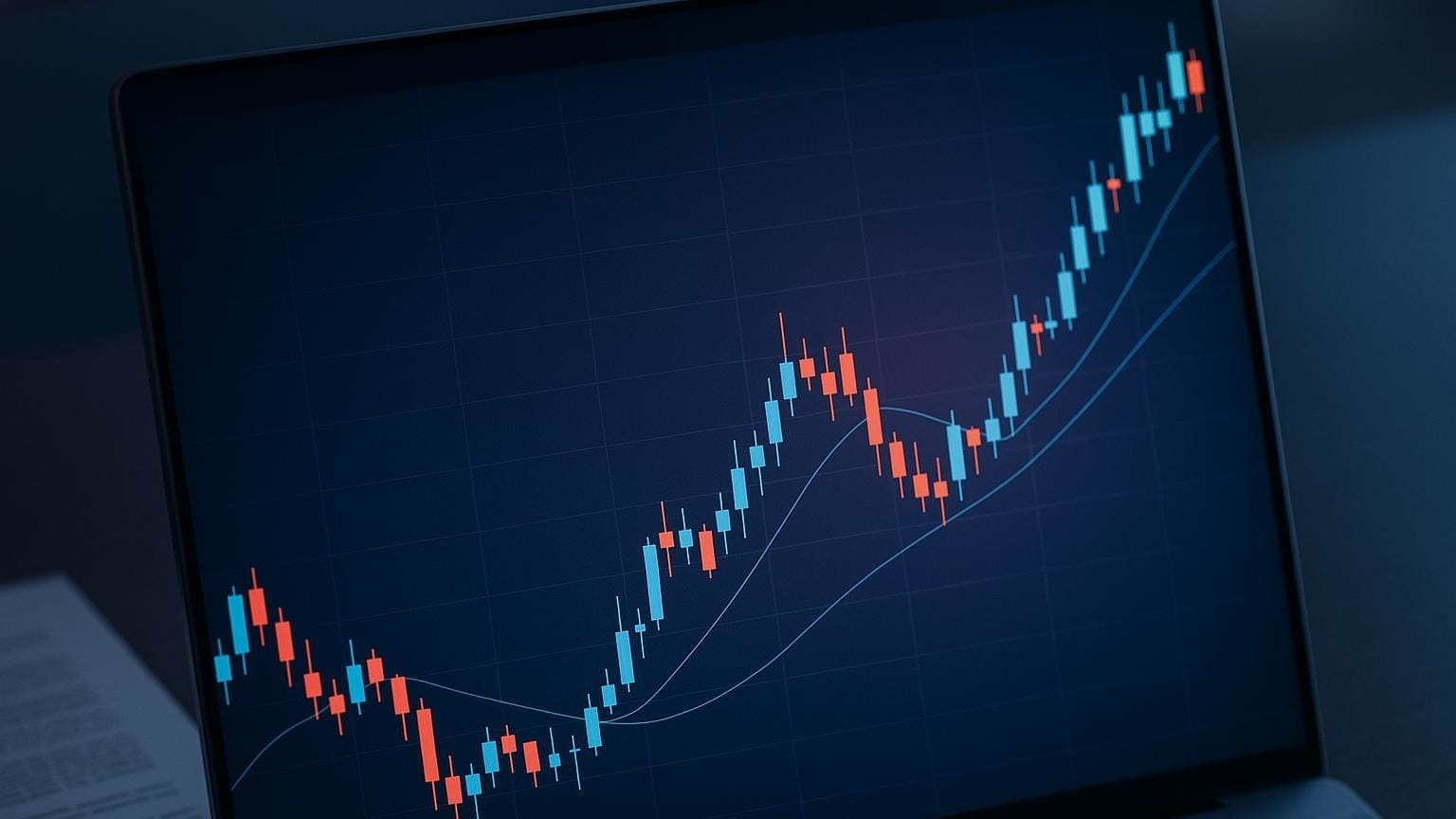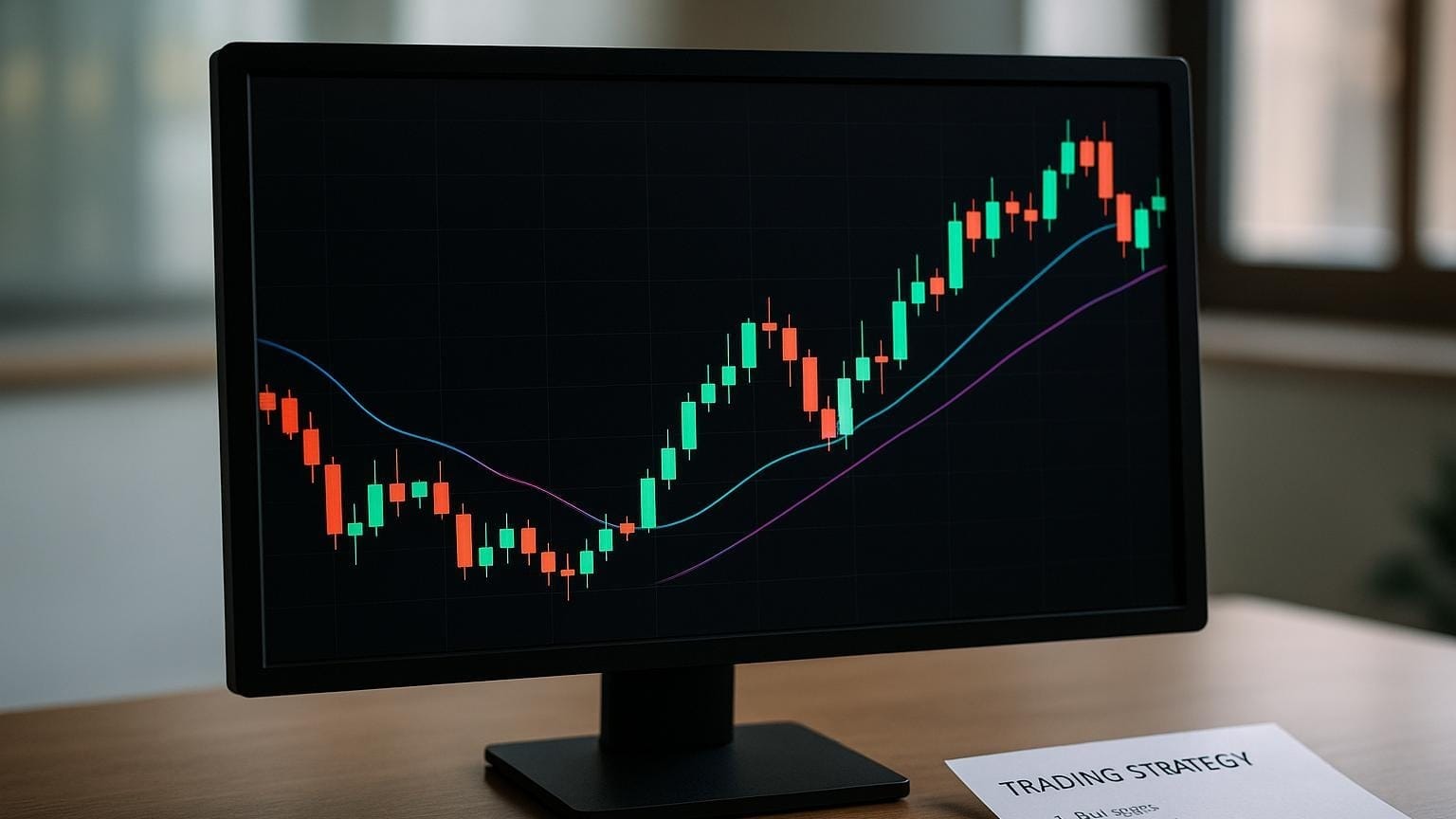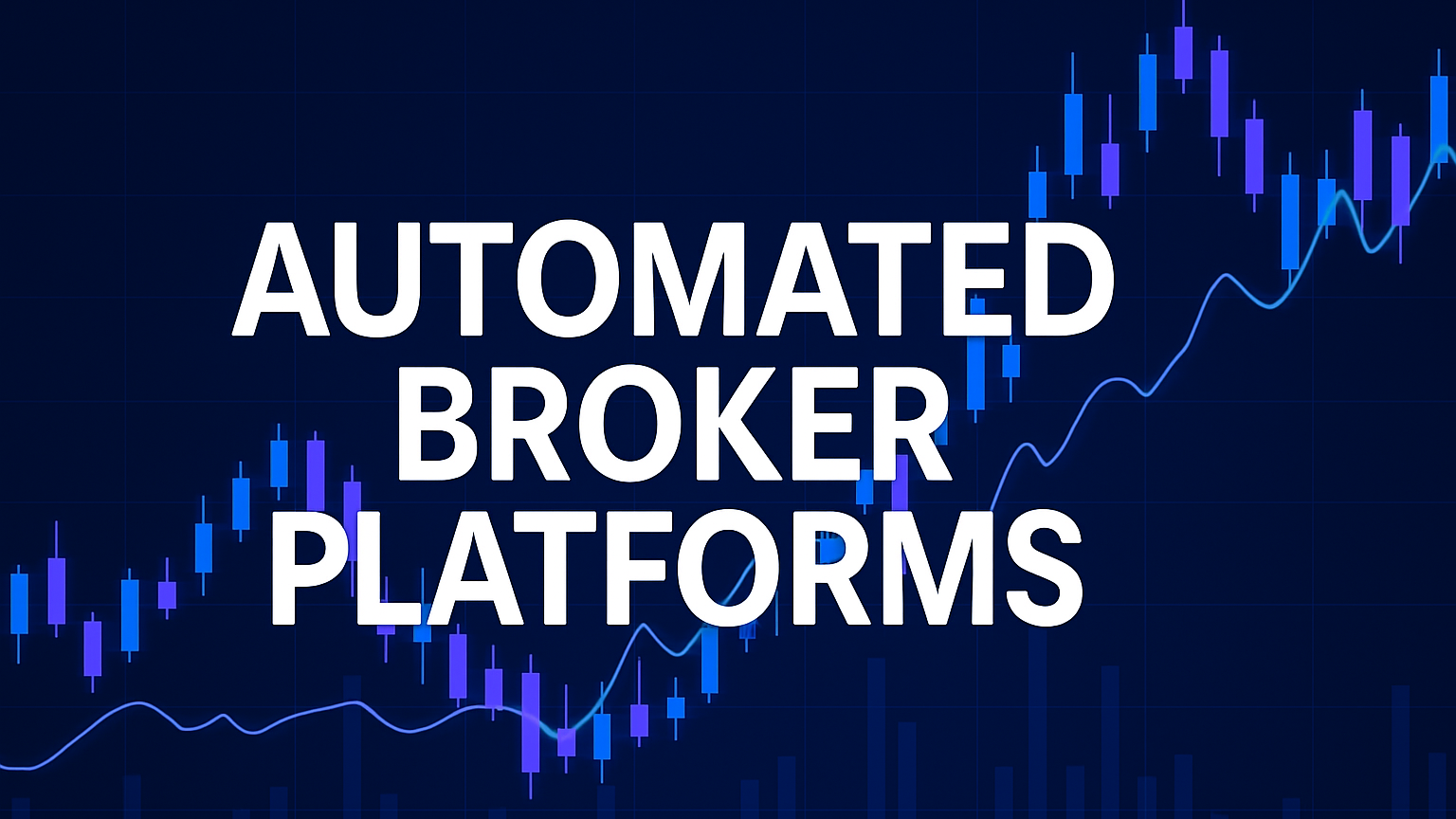Explore the essential psychological strategies for algorithmic traders to enhance emotional control, system confidence, and risk management.
Algorithmic trading is more than just coding strategies. It’s about managing emotions, biases, and decision-making to ensure consistent results. While algorithms execute trades, human oversight plays a critical role in designing, monitoring, and improving them. Here’s what you need to know:
Key Takeaways:
- Emotional Control: Fear, greed, and overconfidence can lead to poor decisions. Use stop-losses, cool-down periods, and stress tests to stay disciplined.
- System Confidence: Build trust in your algorithms through rigorous backtesting, forward testing, and live small-scale testing.
- Bias Awareness: Avoid common biases like overconfidence and loss aversion by regularly reviewing performance and seeking opposing evidence.
- Risk Management: Use automated controls like stop-losses, position sizing, and exposure limits to protect your portfolio.
- Mental Resilience: Practice mindfulness, maintain a focused workspace, and review strategies consistently to stay objective.
Quick Comparison: Human vs. Machine in Trading
| Aspect | Human | Machine |
|---|---|---|
| Speed | Limited by cognition | Instant execution |
| Emotional Impact | Affected by fear and greed | Emotion-free |
| Pattern Recognition | Intuitive | Statistical and precise |
| Flexibility | Adapts quickly to new data | Requires manual updates |
To succeed in algorithmic trading, combine your system's precision with your ability to manage emotions and biases. Focus on disciplined execution, regular reviews, and mental well-being to achieve long-term success.
The Psychology of Trading - Essential Mental Strategies for Algorithmic Success
Mental Challenges in Algo Trading
Algorithmic traders encounter psychological obstacles that can heavily influence their performance. While systems handle execution, human psychology still plays a key role in designing, monitoring, and maintaining these systems.
Managing Emotions and Trade Frequency
Fear and greed often lead traders to make hasty changes to their algorithms. To avoid this, disciplined traders follow strict protocols for modifications:
| Emotional Trigger | Control Method | Expected Outcome |
|---|---|---|
| Fear during drawdowns | Apply stop-loss orders and set clear position sizing rules | Avoid panic-driven changes to the system |
| FOMO (fear of missing out) on market moves | Introduce cool-down periods before making changes | Minimize impulsive strategy adjustments |
| Overconfidence in backtests | Run stress tests under various market conditions | Develop realistic performance expectations |
By using systematic validation methods, traders can reinforce their trust in the system and reduce the influence of emotional impulses.
Building System Confidence
Gaining trust in trading algorithms requires rigorous validation. Walk-forward testing is one effective approach that goes beyond traditional backtesting. A mix of validation techniques can help:
-
Validation Framework
Use a three-step process: backtesting, forward testing, and live trading with small positions. This gradual approach builds confidence while keeping risks low. -
Performance Monitoring
Regularly track metrics like risk-adjusted returns, maximum drawdown, and consistency. This helps identify and address potential issues early.
Human vs Machine Decision-Making
Machines excel at fast, rule-based execution, but human oversight is essential for strategic decisions. Here’s a comparison of their strengths:
| Aspect | Human Decision-Making | Machine Decision-Making |
|---|---|---|
| Processing Speed | Limited by cognitive capacity | Handles large datasets instantly |
| Emotional Impact | Influenced by fear and greed | Operates strictly within programmed rules |
| Pattern Recognition | Strong intuitive abilities | Excels at finding statistical patterns |
| Flexibility | Adapts quickly to new situations | Needs manual updates for changes |
Traders can combine these strengths effectively. Techniques like mindfulness and meditation can help manage the stress of overseeing systems. By setting clear rules for when and how to intervene - based on market conditions, performance benchmarks, and risk levels - traders can maintain a balanced partnership between human judgment and machine precision.
Strengthening Trading Psychology
Algorithmic traders face unique mental challenges that require building resilience. This resilience isn't automatic - it demands consistent mental and physical care.
Handling Market Stress
Market volatility can stir up intense emotions, making it harder to stay objective. To manage this:
- Adjust position sizes during periods of high market volatility.
- Practice mindfulness techniques like pre-market meditation to sharpen focus and reduce impulsive decisions.
- Keep your workspace organized and turn off unnecessary notifications to cut down on distractions.
Staying calm during stressful situations sets the stage for handling trading losses in a more structured way.
Responding to Trading Losses
Recovering from losses involves a clear, step-by-step approach that focuses on analyzing mistakes, tightening risk controls, and rebuilding confidence.
-
System Analysis
Dive deep into your trading system's performance data. Identify what went wrong and note areas where the algorithm's logic can be improved. -
Risk Recalibration
Adjust your risk management strategies by:- Decreasing position sizes
- Applying stricter stop-loss rules
- Diversifying across strategies that aren’t correlated
-
Confidence Rebuilding
Start with smaller trades to test and confirm any system updates. As Kotak Securities aptly puts it:"Recovering from a big loss in trading is all about learning, adapting, and growing".
While these steps help in the short term, long-term success hinges on maintaining a routine that supports both mental and physical well-being.
Long-Term Performance Management
To ensure steady results over time, focus on habits that enhance both your body and mind:
- Incorporate regular exercise to improve brain oxygenation, which boosts cognitive function.
- Conduct disciplined performance reviews and evaluate your strategies monthly.
One case study even showed a 15% boost in return consistency after combining automated systems with structured physical and mental training programs. Investing in these habits pays off in the form of better trading outcomes.
Better Trading Decisions
To trade successfully, it's crucial to manage biases and regularly evaluate strategies. Even with algorithmic systems, human judgment plays a key role in shaping outcomes.
Common Trading Biases
Understanding and addressing biases can lead to better decisions. Algorithmic traders, like all investors, face mental traps that can cloud their judgment. As Morgan Housel puts it:
"Investing is not the study of finance. It's the study of how people behave with money".
| Bias Type | Impact on Trading | How to Address It |
|---|---|---|
| Confirmation | Favoring data that supports your beliefs | Actively seek out opposing evidence |
| Overconfidence | Taking on too much risk or trading often | Use smaller position sizes |
| Loss Aversion | Holding onto losing trades too long | Set and stick to strict stop-loss rules |
| Recency | Giving too much weight to recent events | Analyze longer-term historical data |
A great example of biases at work is the dot-com bubble of the late 1990s. During this time, overconfidence and greed drove investors to pour money into internet-based companies without solid fundamentals. This frenzy ultimately led to a market crash in early 2000.
Strategy Review Methods
Regularly reviewing your trading strategies helps you stay objective and adjust to market changes. Key metrics to analyze include:
- Performance Metrics: Track win rates, Sharpe ratios, and maximum drawdowns.
- Market Conditions: Evaluate how strategies perform under different market scenarios.
- Resource Use: Check computational efficiency and execution costs.
- Risk Management: Review position sizes and leverage levels.
As Richard Feynman famously said:
"The first principle is that you must not fool yourself and you are the easiest person to fool".
Manual Intervention Guidelines
Even with systematic reviews, manual intervention should be kept to a minimum. For example, Zach Oakes found that manual overrides cost an average of $85 per contract compared to automated exits.
Here are some tips for handling manual overrides:
- Set clear rules for when to intervene during extreme market conditions.
- Pause new trades rather than interfering with active ones.
- Use system safeguards like alerts, drawdown limits, and win-percentage monitoring.
"If you must override, according to this small sample it is best to simply omit a trade, rather than get involved after the trade is entered".
Finally, remember this insight:
"Understanding yourself is synonymous with understanding the markets because as a trader you are part of the collective force that moves prices. How could you begin to understand the dynamics of group behavior well enough to extract money from the group, as a result of their behavior, if you don't understand the inner forces that affect your own?"
Building Algorithm Confidence
Developing confidence in your trading algorithm isn't just about ensuring technical accuracy; it's also about cultivating the mental discipline needed for algorithmic trading. Here’s how to validate and maintain trust in your strategies.
Effective Backtesting
Backtesting is the foundation of any successful algorithmic trading strategy. To make it meaningful, focus on these key elements:
| Testing Phase | Key Components | Purpose |
|---|---|---|
| Initial Validation | High-quality historical data, Transaction costs | Establish baseline performance |
| Out-of-Sample | Random data segments, Walk-forward analysis | Avoid overfitting |
| Forward Testing | Live market simulation, Real-time data | Verify strategy in real conditions |
Including transaction costs ensures a more accurate evaluation of your strategy's potential. Tools like LuxAlgo's AI Backtesting Assistant can help you test strategies across various timeframes while factoring in actual trading expenses.
Step-by-Step Implementation
Once your backtesting results show promise, move toward live deployment in a controlled manner:
- Start Small: Begin with a single market and small position sizes to minimize risk while identifying potential issues.
- Gradual Scaling: Once you see consistent results, expand your position sizes and market coverage. Keep an eye on resource usage and execution efficiency.
- Full Deployment: Before scaling fully, set up robust monitoring systems and automated safeguards to catch and prevent unexpected behavior.
These steps reduce the chance of costly errors and allow you to refine your strategy in real-world conditions.
Performance Tracking
To ensure your strategy stays effective, monitor these critical metrics:
- Data Drift: Keep an eye on changes in market conditions that could impact your algorithm's performance.
- Resource Utilization: Track computational efficiency and execution costs to maintain smooth operation.
- Risk Metrics: Regularly assess metrics like maximum drawdowns and Sharpe ratios to evaluate risk.
Compare live results against your backtesting benchmarks to quickly spot issues. Since market conditions evolve, strategies that worked in the past may require updates. Automated tools can help you test performance and guide decisions about retraining or refining your model.
Trading System Discipline
Just like strong psychology supports sound decision-making, sticking to disciplined system protocols helps curb impulsive actions and ensures confidence in your algorithm. By combining regular strategy reviews with performance tracking, disciplined systems help your algorithm stay reliable across different market scenarios.
Trading Plan Development
A well-structured trading plan is essential. It should outline clear rules for executing trades, managing risk, and measuring performance:
| Component | Description | Key Considerations |
|---|---|---|
| Strategy Rules | Entry/exit conditions | Clear, programmable logic |
| Risk Parameters | Position sizing and drawdown limits | Enforces system discipline |
| Performance Goals | Return targets, Sharpe ratio | Set realistic benchmarks |
| Monitoring Protocol | Alert thresholds, review schedules | Automated checks |
With a solid plan in place, the next step is implementing accurate risk controls.
Risk Control Methods
Automated risk controls are essential for long-term success. Modern algorithmic trading platforms provide advanced tools to help manage risk systematically. For example, ClickAlgo's Smart-Grid Trading System showcases how fine-tuning parameters can improve risk management without compromising strategy performance.
Key automated controls include:
- Position Sizing Algorithm: Adjusts positions based on factors like equity, volatility, and correlations.
- Automated Stop-Loss: Sets hard stops at both individual position and portfolio levels.
- Exposure Limits: Caps allocations for each strategy, asset class, and overall portfolio.
"Good risk management is the foundation of successful algorithmic trading operations." - Jeff Sekinger
These automated tools lay the groundwork for effective system upkeep.
System Maintenance Steps
Routine maintenance ensures your trading system remains effective and secure. Here's a breakdown of tasks to keep it running smoothly:
-
Weekly
- Run backtests using data since the last calibration.
- Recalibrate on Sundays if performance metrics suggest adjustments.
-
Monthly
- Update trading servers and refresh API credentials.
- Apply Linux kernel hardening measures for added security.
-
Quarterly
- Assess your strategy's alignment with current market conditions.
- Update algorithms while keeping the core logic intact.
Conclusion
Key Takeaways
Algorithmic trading thrives when technical accuracy meets strong psychological discipline. To excel, traders need to balance automated processes with mental resilience.
Here’s how key psychological principles influence success:
| Principle | Impact | How to Apply |
|---|---|---|
| Emotional Control | Encourages consistent, systematic decisions | Practice mindfulness daily, try meditation |
| Cognitive Bias Awareness | Enhances strategy development | Conduct self-assessments, seek peer reviews |
| System Confidence | Promotes disciplined execution | Use clear performance metrics, validate thoroughly |
| Risk Management | Boosts confidence through structured methods | Set automated controls aligned with your limits |
These principles aren’t just theoretical - they shape practical habits that strengthen your discipline every day.
Steps to Take
Apply these strategies to improve your trading:
-
Create a Focused Workspace
- Dedicate a specific area for trading.
- Turn off unnecessary notifications.
- Plan regular, focused breaks.
-
Track System Changes
- Log updates and the reasons behind them.
- Note your emotions during key decisions.
- Review performance metrics with a clear, unbiased mindset.
-
Strengthen Your Mental Fortitude
- Incorporate mindfulness into your daily routine.
- Keep a detailed trading journal.
- Join and engage with trading communities for support and insights.
To succeed in algorithmic trading, you need more than technical skills. Commit to continuous mental and emotional growth while refining your technical approach. This balance is the foundation for long-term success.








